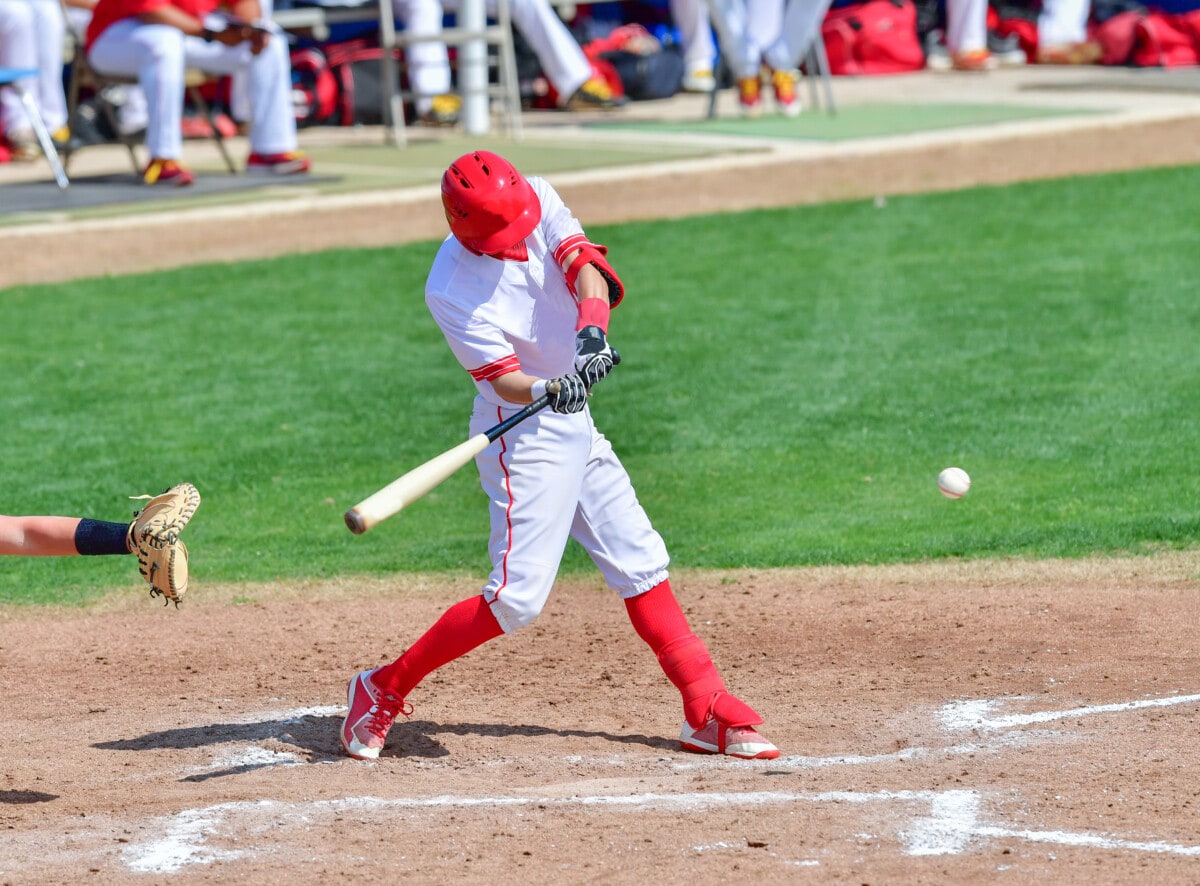Exit velocity is measured at almost every showcase, and while it is just one aspect of a good hitter, it can certainly be a great way to stand out and catch the attention of scouts. Scouts look at a prospect’s exit velocity to measure the raw power they have.
High-level college and professional scouts look for hitters with 95+ mph exit velocity. Exit velocity is measured by hitting a line drive off a tee, and recording the speed with a radar gun. The radar gun measures the velocity of the batted ball immediately after it is hit by the batter.
There are several factors that can attribute to faster exit velocity, and when players are preparing for an upcoming showcase, it is important to understand how to maximize exit velocity, and in turn, stand out from other players. In this article, we will dive into tips for increasing exit velocity and how to prepare for peak performance at any future showcase.
What is Good Exit Velocity?
Professional
- Above-Average: 101+ mph
- Average: 96-100 mph
- Below-Average: 95- mph
Collegiate
- Above-Average: 96+ mph
- Average: 90-95 mph
- Below-Average: 89- mph
High School
- Above-Average: 90+ mph
- Average: 84-89 mph
- Below-Average: 83- mph
How Exit Velocity is Measured
Exit velocity can be measured multiple ways; hitting off a tee, hitting batting practice, or hitting live pitching. In this article, we are focusing on measuring exit velocity while hitting off a tee. This is the most common form when it comes to showcases and college camps as it has the least amount of variables, and is the easiest to measure consistently.
To measure exit velocity accurately, a tee, batting cage or net, and a radar gun is required. The tee should be set up about 15-20 feet away from the net or end of the cage. The radar gun should be set up another 15-20 feet behind the tee. The batter should hit a line drive directly towards the center back of the cage. This will provide the most accurate reading on the radar gun.
It is important that the radar gun is set up directly in line with the tee and the end of the cage. Equally important is that the batter should be hitting line drives off the tee. Any balls hit up/down or right/left will cause inaccurate readings and should not be considered valid samples when evaluating bat speed.
Practice and Prepare
It is safe to assume that at most showcases, college camps, or pro workouts, exit velocity is measured. A player should prepare and practice for this event, so they know exactly how to approach the event to maximize their exit velocity, giving themselves the best opportunities to succeed and stand out.
Showcases can be nerve-racking, but the more prepared and confident a player can be, the more it will positively impact their performance. Preparing properly should be taken seriously, especially if a player is serious about having a long career and setting themselves up for opportunities to play at the next level. In the next section, we break down some tips and strategies to prepare for testing exit velocity.
Tips for Maximizing Exit Velocity
Setting up the Tee
There are no rules on how to set up the tee when testing exit velocity. There is also no right or wrong way to do it. It is totally dependent on the player and their swing. Test out different tee heights, and positions around the plate (our favorite tee: The Tanner Heavy Tee). Some players hit the ball the hardest up in the zone, while others may hit it harder lower in the zone. Point of contact can also make a big difference in exit velocity. Placing the tee too far forward or too far back can decrease exit velocity, so this is another important variable to test out and find the right placement. Players should find a tee placement that works for them, and one that they can confidently use to hit the ball up the middle to the back of the cage consistently.
Choosing the Right Bat
Showcases will usually determine if wood or metal bats should be used. Although, if given the choice, metal bats will almost always perform better than wood bats. Outside of those requirements, it is up to the player to choose their bat of preference. If possible, if a player has multiple bats at different lengths and weights, they should test out all their options to determine which one performs best for optimizing exit velocity. There is no magic formula when it comes to weight and length, and no way to know which will work best without testing it.
Practice, Practice, Practice
A player’s maximum exit velocity reading will come from hitting line drives right back up the middle. Consistent practice at this will help when it comes time to do this at a showcase. The confidence will also allow a player to relax, which tends to lead to better results, as opposed to being tensed up and nervous. There is no secret to practicing this, just simply get a bucket of baseballs and practice hitting the ball off the tee right back up the middle. Even mentally simulating and pretending that each swing is a swing at a showcase can be great practice so that nothing is different when performing at an actual showcase.
Proper Training
With some players, especially younger players, exit velocity can be quickly and dramatically improved with better swing mechanics and simply getting stronger. Working with a qualified coach on both mechanics and baseball-specific strength training should be part of a player’s year-round training routine. Regularly measuring exit velocity is a great way to measure improvement and progression throughout training regimens.

